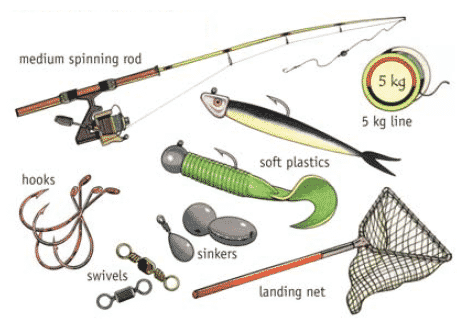Genus Platycephalus
Description
A long flattened fish, with large head and rounded tapering body. The wide mouth is fitted with sharp teeth. The underside of the fish is a creamy white and the back can range from a sandy, light brown to a very dark brown with various spots and markings. There are sharp spikes on the back of the gill covers which can inflict a painful wound and flathead should be handled very carefully.
Distribution
Sand flathead are found in deeper water (over 6 m) and frequent sandy or muddy bottoms. Yank (or southern blue-spotted) flathead are generally found in much shallower water and show preference for areas with weed beds, rubble or reefs. Flathead are most prolific during the summer and autumn months
Size
Size depends on the species of flathead as several different varieties can be caught in the Port Phillip area. Most fish caught would be under a kilogram. Yank (or southern blue- spotted) flathead grow larger and can reach several kilograms
Fishing techniques and tackle
Flathead are caught on a range of fishing tackle from light rods used in boats to surf casting tackle. Sinker weight should be chosen according to the desired casting distance and line from 3-8 kg can be used successfully. Fish can be caught on either running sinker or paternoster rigs. A particularly good method is to drag the bait slowly across the bottom as occurs when fishing whilst drifting in a boat also caught on a variety of lures and soft plastics. Flathead can be caught at all stages of the tide.


Baits
The most common baits for flathead are pilchards, whitebait and squid although flathead will take most saltwater baits including pipies, mussel, bass yabbies and prawns. Larger yank flathead can be caught on small live baits such as mullet.

Locations
Flathead are caught from many of the land-based fishing locations in Victoria. Just about all piers and rock walls will produce flathead during the warmer months. From a boat flathead can be caught throughout many Victorian waters
Sustainable fishing techniques
- Hook damage is the most significant cause of fish dying after being released. Deep-hooked (gills, gut) fish are far less likely to survive.
- Fish with a tight line so that fish are less likely to swallow the hook.
- Increase the size of your hooks to prevent small fish swallowing them.
- Avoid suspending fish on the hook.
- Fish hooked in the mouth or lip have the best chance of survival.
- Remove the hook with long nosed pliers.
- If you can’t see the whole hook protruding from the mouth of the fish don’t try and remove it.
- Cut the line and release the fish.
- Wet your hands before handling the fish.
- Avoid touching the gills and eyes.
- Return the fish as quickly as possible.
Related Resources
Fishes of Australia
Dusky Flathead
http://fishesofaustralia.net.au/home/species/3359
Southern Sand Flathead
http://fishesofaustralia.net.au/home/species/3356




